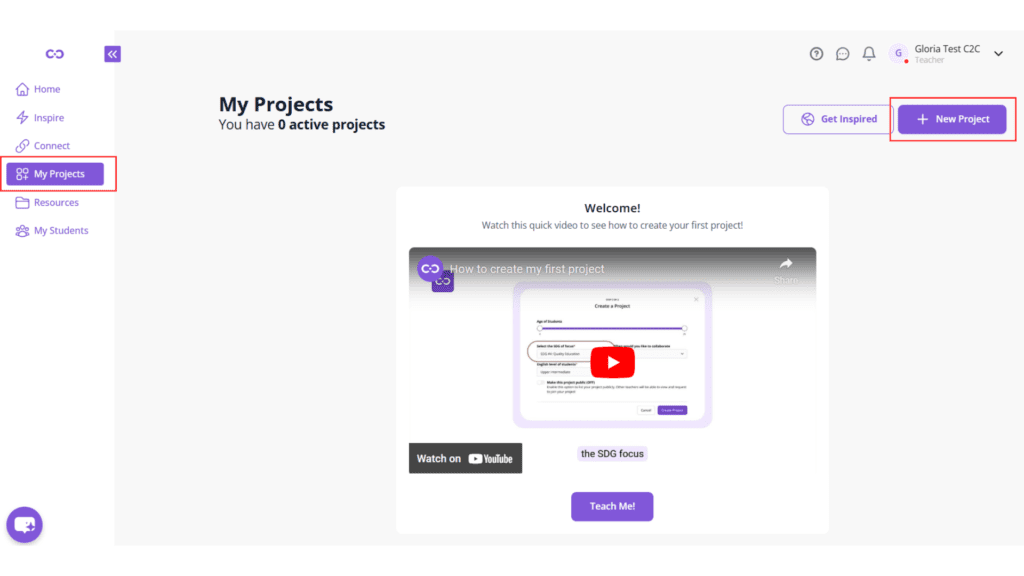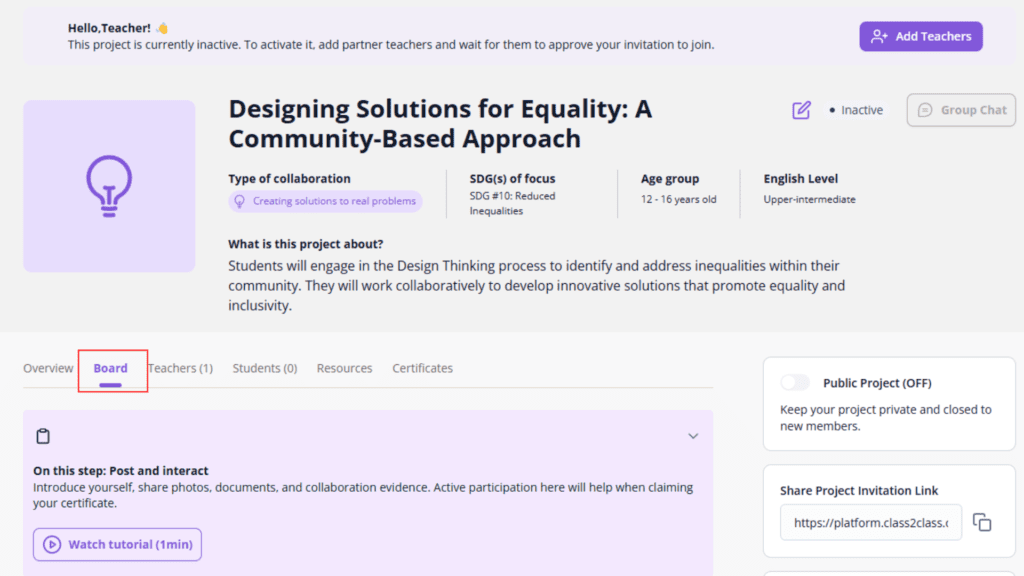In today’s rapidly changing world, students need more than just academic knowledge to succeed. They require skills that enable them to think creatively, solve complex problems, and collaborate effectively with others. This is where design thinking comes in.
Design thinking is a creative problem-solving methodology that emphasizes empathy, experimentation, and iterative learning. It provides a structured yet flexible approach to tackling challenges, making it an invaluable tool for students.
Design Thinking in Education
The importance of design thinking in education cannot be overstated. By integrating design thinking into the learning process, teachers can foster creativity, enhance critical thinking, and promote problem-solving skills among their students. It encourages students to think outside the box, consider multiple perspectives, and develop a growth mindset. These skills are essential not only for academic success but also for thriving in the 21st-century workplace.
Class2Class.org recognizes the transformative power of design thinking and has seamlessly integrated it into its learning journey. “Create solutions to real problems” type of collaboration, students have the opportunity to apply the design thinking methodology to solve real-world problems in collaboration with international partners. This unique approach not only develops crucial skills but also cultivates global citizenship and cross-cultural understanding.
Our Learning Journey
Class2Class.org offers a unique learning journey designed to inspire students to connect, collaborate, create, and contribute alongside classrooms across the globe. Let’s take a closer look at each type of collaboration:
- Get to Know Each Other – This level focuses on exploring and understanding the cultural diversity of the participants and building strong relationships with peers from other countries.
- Working Towards the SDGs – Students actively participate in projects that contribute to a more sustainable future by working on the United Nations Sustainable Development Goals (SDGs).
- Create Solutions to Real Problems – Here, students develop their creativity, critical thinking, and problem-solving skills by using Design Thinking to tackle real-life challenges.

Creating Solutions to Real Problems
Let’s dive deeper into “Create solutions to real problems” where students engage in collaborative online international learning (COIL) experiences to address global challenges. By applying the design thinking methodology, students embark on a transformative journey of problem-solving and innovation:
- The process begins with empathy, where students seek to understand the needs and perspectives of those affected by the problem they are trying to solve. They conduct research, engage in active listening, and put themselves in others’ shoes. This helps them gain a deeper understanding of the issue at hand.
- Next, students move on to problem definition. They analyze the information gathered during the empathy stage and identify the core problem they want to address. This step is crucial as it sets the direction for the entire project.
- Once the problem is defined, students enter the ideation phase. This is where creativity flourishes as they generate a wide range of potential solutions. They are encouraged to think boldly, embrace unconventional ideas, and build upon each other’s suggestions.
- After ideation, students select the most promising ideas and create prototypes. These tangible representations of their solutions allow them to test and refine their concepts. Through iteration and feedback, they improve their designs and move closer to a viable solution.
- Finally, students test their prototypes with real users. They gather feedback, make necessary adjustments, and evaluate the effectiveness of their solutions. This iterative process helps them create solutions that genuinely address the needs of their target audience.
Success Stories at Class2Class.org
Class2Class.org has witnessed numerous inspiring success stories of students making a real. Let’s take a look at two remarkable examples.
- “Cut Bullying Out” – Anuradha Sharma from India and Jamila Rahmeni from Tunisia joined forces to promote kindness and prevent bullying. Their students created innovative solutions like the “spinning wheel game” and “anti-bullying bracelets” to foster a safer school environment. These creative initiatives not only raised awareness but also actively engaged students in promoting positive change.
- “Incluite Incluí” – Gisel Crespo from Argentina and her students embarked on a mission to reduce inequalities. They developed ideas such as a special song, pictograms, and inclusive desks and chairs to make their school more welcoming for all. Their project reached the entire community and even earned them a spot at the “Global Inclusive Schools’ Forum” organized by UNESCO and IFIP.
These success stories showcase the power of design thinking and international collaboration in creating meaningful solutions to real-world problems. Read the full inspiring stories on Class2Class.org and discover how you can make a difference with your students.
Implementing Design Thinking with Class2Class.org
Now that you understand the importance of design thinking and its role in Class2Class.org’s learning journey, let’s explore how you can implement it with your students.
Step 1: Choose a Topic – Begin by selecting a topic that aligns with your students’ interests and the SDGs. Consider the global challenges you want to address and the skills you want your students to develop.
Step 2: Find an International Partner – Utilize the Connect section on Class2Class.org to find a collaboration partner from another country. Look for teachers who share your interests and are committed to creating a meaningful learning experience for their students.
Step 3: Utilize Class2Class.org’s Resources – Take advantage of the extensive resources available on the platform, including lesson plans, documents, videos, and assessment models. These resources are designed to support your project and ensure a successful implementation of the design thinking methodology.
Step 4: Coordinate with Your Partner Teacher – Establish open communication with your partner teacher. Set clear goals, timelines, and expectations for the project. Discuss how you will facilitate collaboration between your students and ensure a smooth learning experience.
Step 5: Guide Your Students Through the Design Thinking Process – Introduce your students to the design thinking methodology and guide them through each stage. Encourage them to develop empathy, define the problem clearly, generate innovative ideas, create prototypes, and test their solutions. Provide support and feedback throughout the process, helping them refine their thinking and improve their designs.
Step 6: Celebrate and Reflect – Celebrate your students’ achievements and the impact they have made through their Level 3 project. Encourage them to reflect on their learning experience, the skills they have developed, and the personal growth they have undergone. Use this reflection to inform future projects and continue fostering a culture of innovation and global citizenship in your classroom.
How to Create a Project on the Class2Class.org Platform
Creating a project on Class2Class.org is a straightforward process. Here’s a step-by-step guide:
1. Log in to your account and go to the “My Projects” section of the platform.

2. From here, click on “Create a new project” to display a small form, where the platform will ask you for details of the project you want to create, such as the project Topic or name, the type of collaboration, and the project description.

3. You will also have the option to “Make your project public” so your project can be listed in the “Explore Projects” section and other teachers from the community can request to join this collaboration

4. Once you have completed the information, a project page will be created with several tab sections and a tutorial video in each. This list will guide you through what you need to do to complete your project.

5. After you complete your project, gather all of your evidence (photos, meeting recordings, videos, presentations) and upload them to the “Board” tab. Once they are all posted, go to the “Certificates” tab and submit your project.

Certification:
Upon completing your project, teachers and students can earn a certification that recognizes their achievement and commitment to global problem-solving and collaboration. To obtain the certification, you need to provide

This certification not only celebrates your students’ accomplishments but also serves as a tangible reminder of the skills they have developed and the impact they have made.To find out what is required to achieve each level, click here.
Ready to Get Started?
Embarking on any type of collaboration on Class2Class.org is an exciting and rewarding journey. If you’re ready to take the first step, Sign up here, complete your profile and create your project today!


